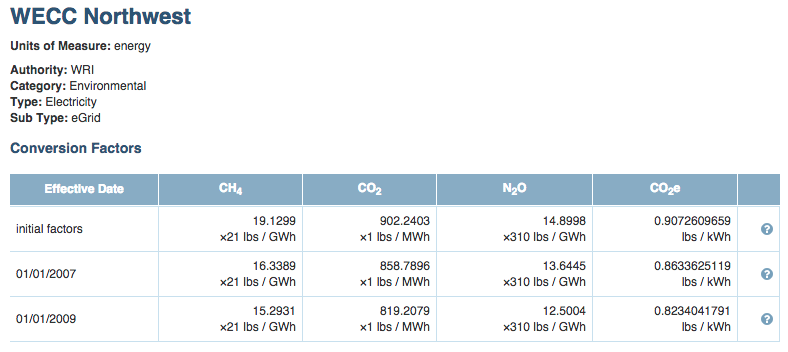This article covers how greenhouse gases are calculated, reported and converted to CO2e. To start, a brief explanation of CO2e may help. When reporting emissions for an array of greenhouse gases (GHG), they are often converted to CO2e, or carbon dioxide equivalent. This allows an organization to report one number to represent all of their emissions. To convert them, GHGs are multiplied by a global warming potential (GWP) in accordance with their climate impact relative to carbon dioxide, with a GWP of 1. For example, methane (CH4) is often given a GWP of x21 and nitrous oxide (N2O) a GWP of x310. So if each tonne of these gases is multiplied by its GWP and added to the CO2 gas total, the result will be total CO2e. Please note that the numbers may not add up precisely due to minor rounding present in the summary table.

To find the exact conversion factor for a resource, click on the Organization tab, select the library it belongs to under Resource Libraries and click on the desired resource name. This will produce a table with greenhouse gas emissions factors and other information about the resource.

When creating greenhouse gas reports and charts in Scope 5, the component gases will usually be listed with units of tonnes or kilograms of, say, CH4 or N2O rather than in CO2e. Therefore, the values for the individual gases will not sum to the CO2e value. Instead, the GWP for each gas is factored into CO2e behind the scenes while preserving the selected units for each greenhouse gas.
If you have any remaining questions about GHG accounting or have ideas for improving this article, please contact Scope 5 support.
Comments